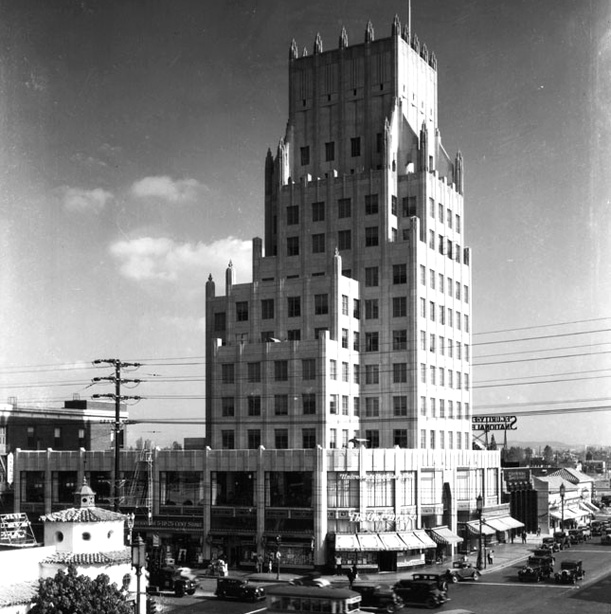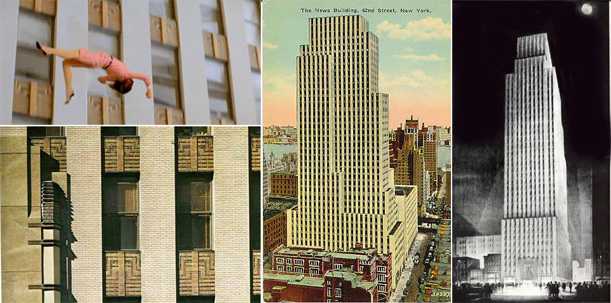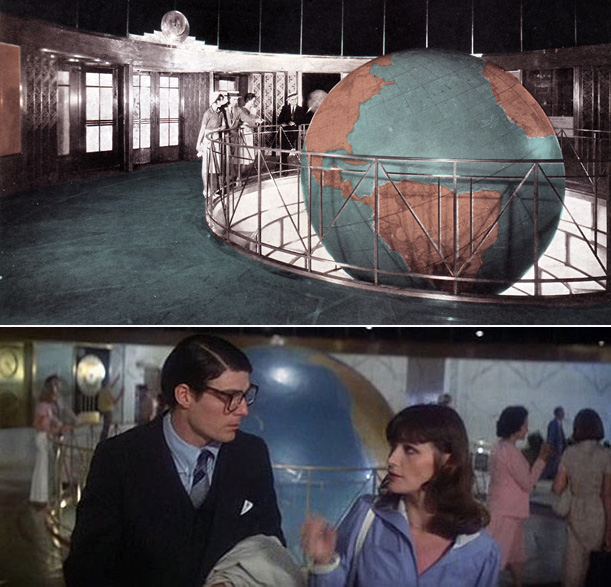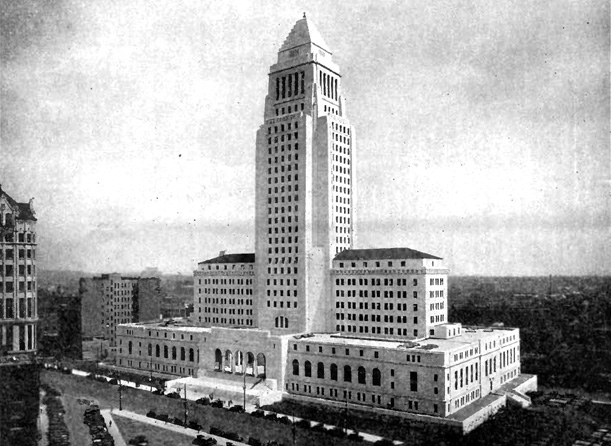The Daily Planet in Film and Television
The real buildings that played the Daily Planet in film and television
![]()

The E. Clem Wilson Building, designed by Meyer & Holle, photographed circa 1935 (image: Security Pacific National Bank Collection; Los Angeles Public Library)
As a follow-up to our article on the history of Daily Planet building in Superman comics and a response to a few comments, I thought we’d take a brief look at some of the Art Deco buildings used to represent the offices of the Daily Planet in live action film and television depictions of Superman.
In the first season of the television series “The Adventures of Superman” (1952-1958) starring George Reeves, the part of the Daily Planet building was played by the E. Clem Wilson Building (1929), designed by Los Angeles architects Meyer & Holler. For the second season, however, the role was recast with the Los Angeles City Hall (1928).
The Art Deco building was the product of three men: John Parkinson was the design architect on the project, Albert C. Martin was the structural engineer, and John C. Austin developed the working drawings. For almost 40 years the building stood as the tallest structure in LA, dominating the skyline until 1964 when building height restrictions were changed. Today, the City Hall building is still a symbol of those who fight for truth, justice, and the American way: the LAPD. It has adorned their badges since 1940.

top left: lois Lane falling in front of the Daily News building in Superman II. right: Hugh Ferriss rendering of the Daily News building (images: NYC Architecture)
In the 1978 film Superman (the movie), Christopher Reeve’s Superman flies through the skyscrapers a Metropolis depicted by New York City, while his Clark Kent bumbles through the offices of the Daily Planet, appropriately represented by the real-life big city offices of the Daily News (1930), a 42-story skyscraper in the heart of Midtown Manhattan. The Art Deco building was designed by Beaux-Arts trained architect Raymond Hood and John Mead Howells, occasional collaborators who had made a name for themselves by winning the 1922 Chicago Tribune Tower competition. Dramatically different from their ornate, neo-Gothic Chicago tower, the Daily News building is restrained and modern it its ornamentation. As drawn by celebrated architectural delineator Hugh Ferriss (right image), the building was a a streamlined vertical monument. What Ferriss’ popular renderings lack in detail, they make up for in effect and were, more than anything else, designed to communicate the impressive power of architecture. Simply put, everything Ferriss drew looked like it belonged in a comic book.

top: 1941 postcard depicting the Daily News lobby bottom: Lois and Clark stroll through the Daily Planet Lobby in Superman
Unlike previous Daily Planet stand-ins, the Daily News building was also sometimes used for interiors, as seen in the above frame from Superman depicting Lois and Clark in the building’s lobby. Yes, the globe was already in the place. It must’ve seemed like a dream-come-true for Superman’s location scouts.
The most recent entry into Superman’s televised cannon, “Smallville” (2001-2011), was filmed in Vancouver and a prominent Art Deco building in that city was used for establishing shots of the Daily Planet:
The Marine Building (1930) was designed by McCarter and Nairne, who in 1930 told The Vancouver Sun that their new building “suggests some great marine rock rising from the sea, clinging with sea flora and fauna, tinted in sea green, flasehd with gold, at night a dim silhouette piercing the sea mists.” This nautical motif, celebrating Vancouver’s tradition of trade and transport, is carried out in the details and terracotta ornamentation depicting sealife, ships, and nautical symbols. This may have been the home of Clark Kent in “Smallville,” but it seems more suited to Aquaman. Obviously, the building was CGI enhanced for its small screen appearance in “Smallville,” with a few extra stories added and what can only be a holographic globe spinning above the pinnacle of the building. Marine life and CGI aside, the building, with its general Art Deco style and massing, successfully continued the proud tradition Art Deco Daily Planets.
In Superman Returns (2006), the Daily Planet was a complete fabrication built by set designers and digital artists. Will the recently opened Man of Steel follow suit? Or will Superman once again leap tall buildings – real tall buildings– in a single bound?
/https://tf-cmsv2-smithsonianmag-media.s3.amazonaws.com/accounts/headshot/Jimmy-Stamp-240.jpg)


/https://tf-cmsv2-smithsonianmag-media.s3.amazonaws.com/accounts/headshot/Jimmy-Stamp-240.jpg)